Raicilleros, Philosopher Kings (Part 3)
According to raicillero Don Lupe, I have a feminine name.
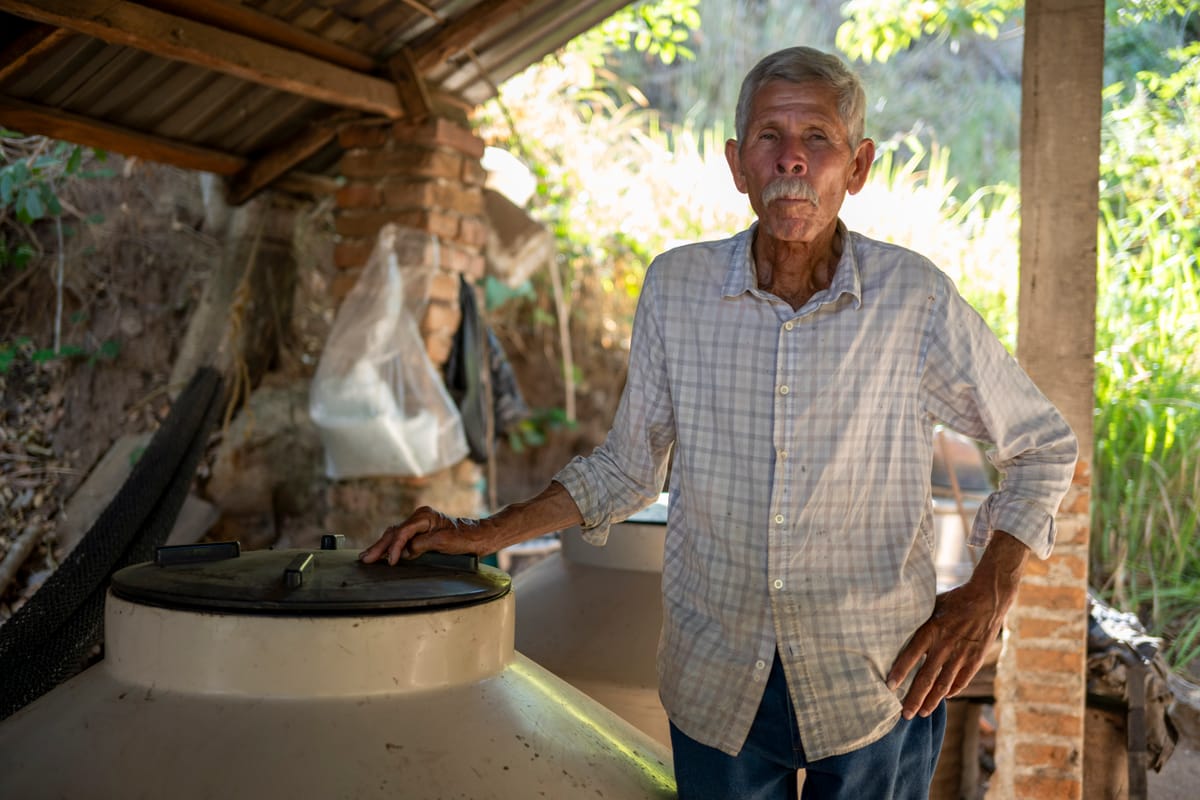
"Skylar? That's a feminine name!" Don Lupe said with a spirited laugh.
Yeah, yeah, sure, laugh it up, big man, I thought as I shook his hand. Let me tell ya something...oh wait, is that a machete over there? You're right. It’s such a silly name. Call me whatever you want, just don't hurt me.
We had just arrived at Don Lupe's house, which was about a 30-odd-minute drive from Adrián's taberna. Arturo had just introduced me to raicillero Don Lupe, who got a kick out of my silly-sounding name.
When I'm in another country, especially in the remote bits, I'll occasionally give myself a new moniker - John, James, Matt - whatever generic white American guy name comes to mind. It's useful for those transactional moments where people aren’t quite sure what to do with a name like "Skylar," and I'd rather not deal with it. But sometimes, using my real name is unavoidable, and comedy will ensue.1
But all transgressions were forgiven when Don Lupe brought out a plateful of absolutely enormous oysters, freshly harvested that morning.
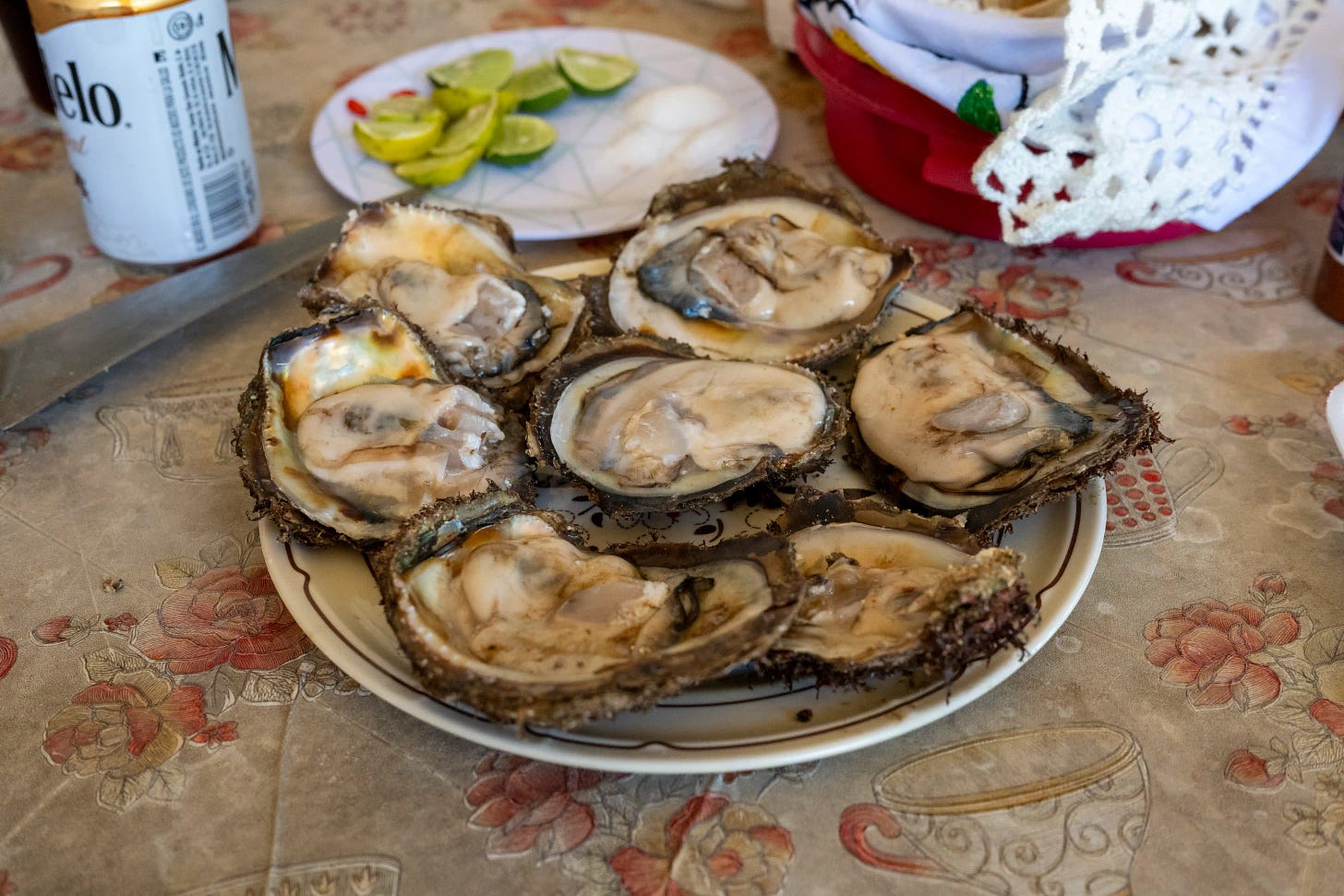
Even though we were up in the mountains, surrounded by agaves, dusty raicilleros, and farmers, from Don Lupe's place, we were only about 30 minutes away from the ocean. Arturo explained that seafood lunches are typical for these parts, especially on the days when they’re making the raicilla.
We sat at a small rustic table outside under a shaded part of his terrace. While I was slurping down oysters, Don Lupe set a tall glass on the table. "El vino," he said, gesturing towards the glass. The vino, of course, was raicilla. Most farmers and raicilleros still call it vino, a nod to its Filipino heritage. Arturo and I poured a little into smaller glasses, raised them to the host, and took a sip. When drinking raicilla, they say bésalo, which means to take small sips or "kiss" the raicilla.
As we ate, Xala, the same billion-dollar development we discussed with Adrián, was once again the topic of conversation. Don Lupe has also noticed more activity in the area—ostensibly workers prepping for the construction and an influx of new visitors. Surprisingly, he departs from Arturo and Adrián on its inevitable impact. Don Lupe is a proponent, not necessarily of Xala specifically, but of the general prospect of more development. To him, it isn't about the environment or raicilla—it's about jobs.

Across Cabo Corrientes, there are a handful of villages scattered throughout. They’re small but still have general infrastructure like roads, soccer pitches, schools, plazas, and parks. But over the last few years, many people have left these villages, searching for more opportunities and better-paying jobs elsewhere. Most folks have gone to live and work in the bigger towns and cities nearby, like El Tuito or Puerto Vallarta.
The result has been fewer families, fewer resources, and less local infrastructure development for the villages. Don Lupe mentions a nearby school as an example. It’s looking like they’ll have to close the school soon because there aren't enough kids to support it. They have the teachers, but all the young families have moved out. So, to Don Lupe, Xala is a chance to bring jobs and young people back to Cabo Corrientes in hopes of revitalizing the villages. And, of course, the demand for raicilla might follow as well.
While Don Lupe voiced his opinion, I could feel Arturo’s discomfort as he shifted in his chair and offered counterpoints. He thinks this development comes at a cost, primarily to the residents and natural resources. More than anything, it will favor those with money, an asset that most in Cabo Corrientes don’t have.
It's a familiar cycle, analogous in many ways to what we've seen and continue to see everywhere we look—an almost impossible choice between economic development and preservation. Does it have to be?
As we drove along a dirt road en route to Don Lupe's taberna, the sun began to set, and the yellow hue of the amarillo2 agaves started to glow on the hills of Cabo Corrientes. It was breathtakingly beautiful, enough to send me into a daze as I looked on from the passenger seat.
After a mile or so, we got to the hidden taberna. The overall layout was familiar—a simple structure, an earthen pit, a few vats full of tuba, and a Filipino-style still.
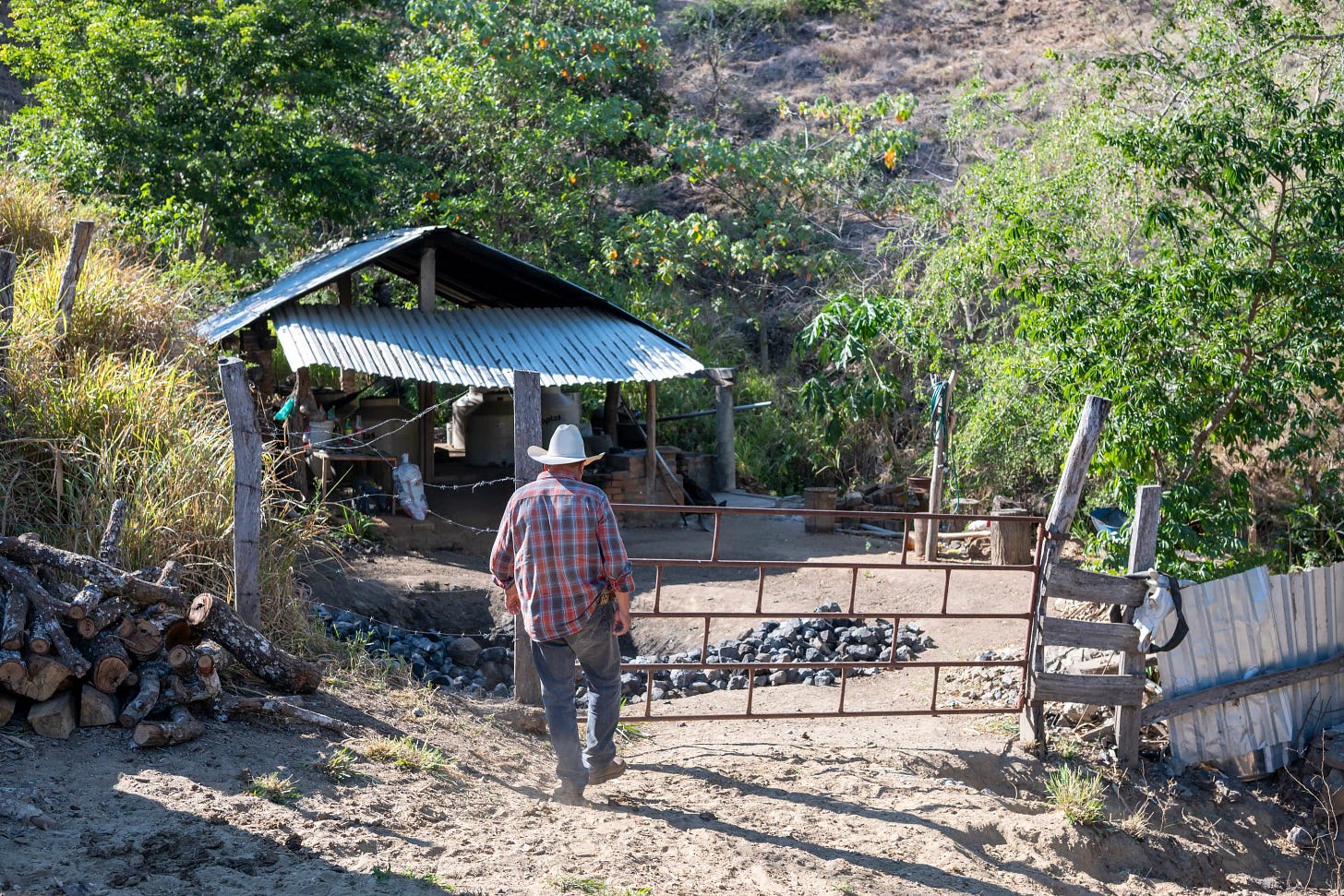
Arturo gave me a brief run-through of how these stills work. As the fire heats a copper bowl filled with tuba, the vapor rises through the hollowed-out tree trunk (usually made from bonete, or papaya tree3) and up to another copper bowl filled with cold water. The hot vapor reacts to the cold copper, causing condensation, which drips down onto a wood plank sitting inside the tree trunk. The wood plank funnels the distillate outside, where the raicilleros collect it. The distillate is run through a second distillation before it’s bottled and ready to drink.

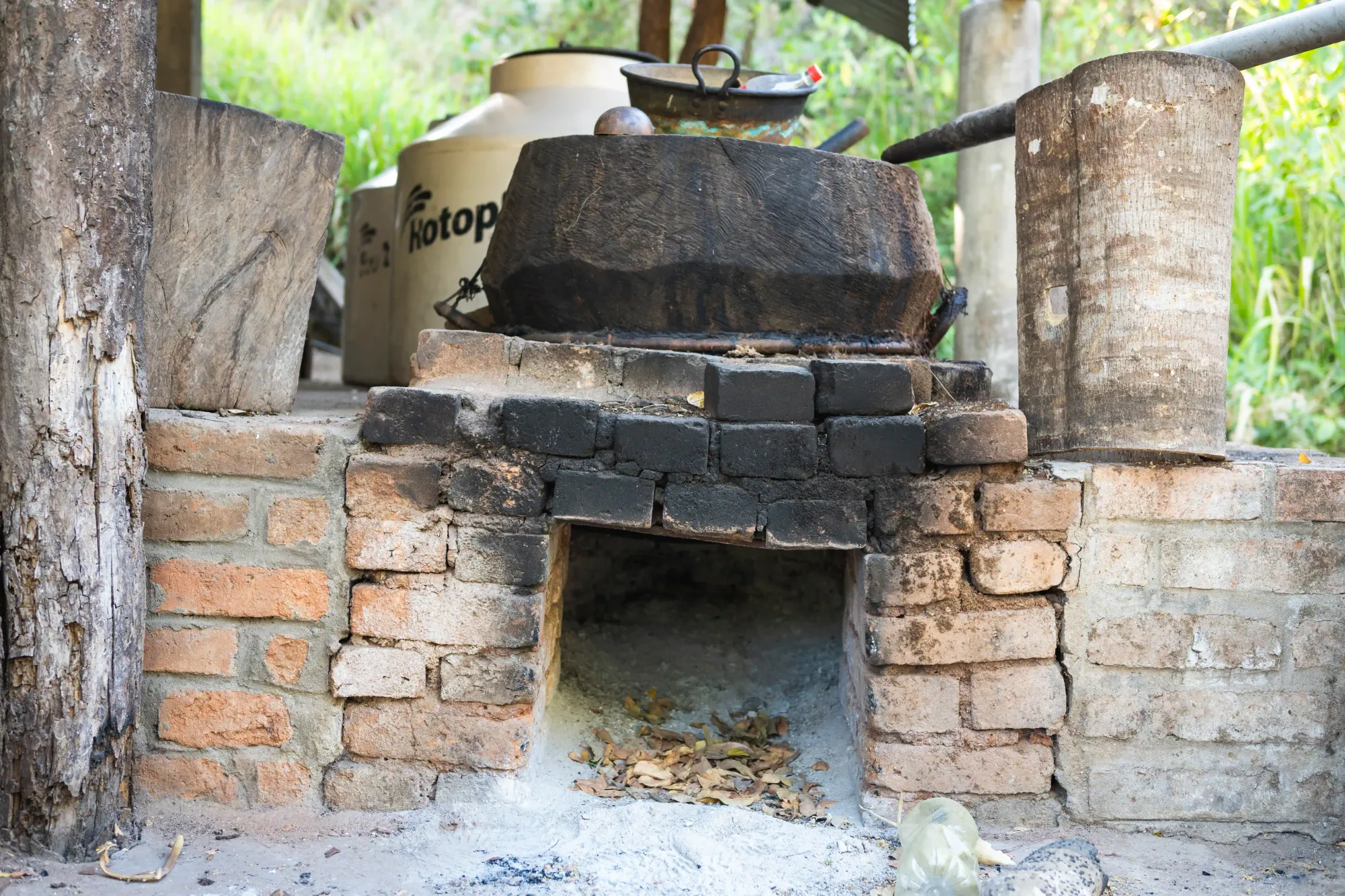
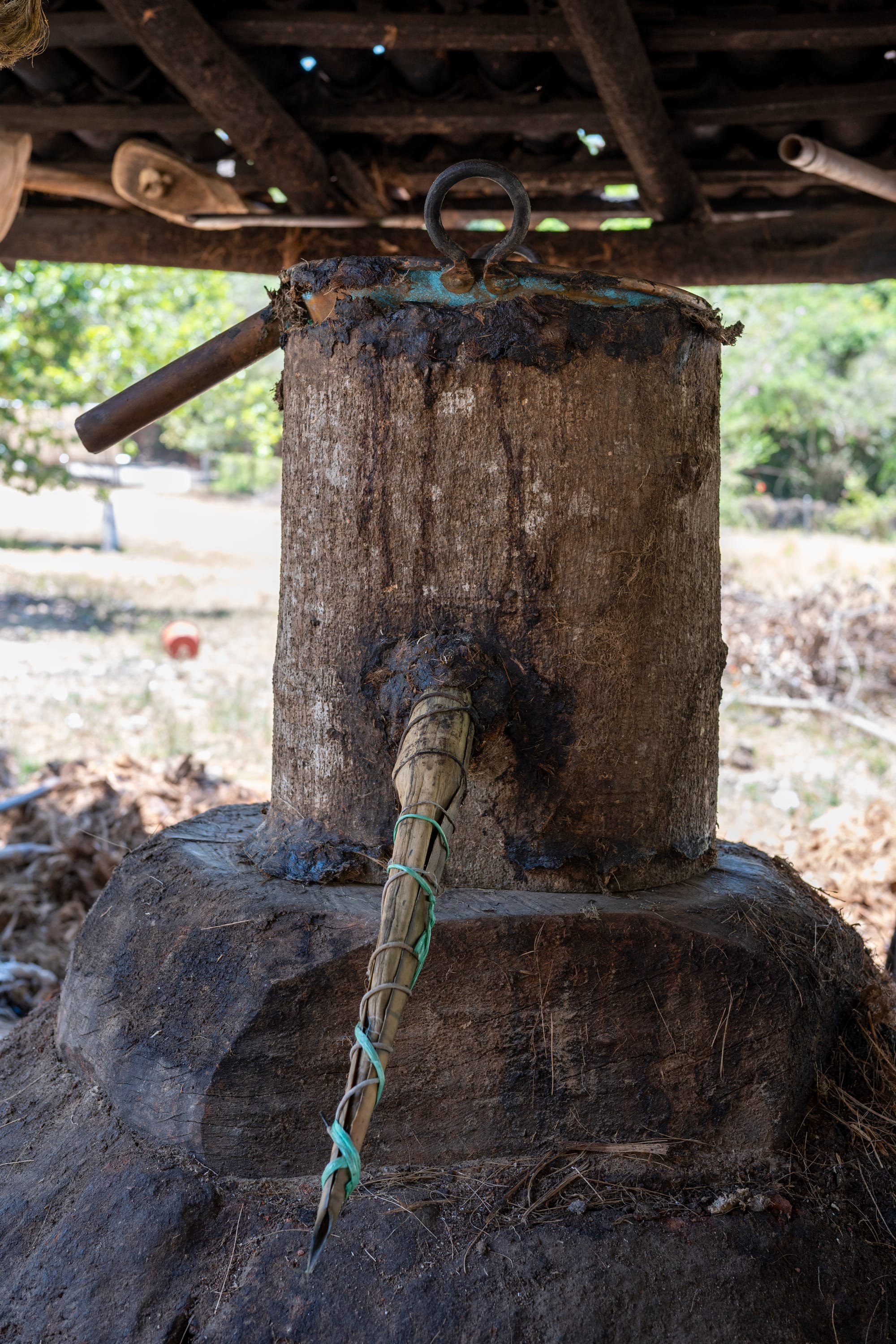
On the left is a general diagram of a Filipino still (source: Wikipedia). In the middle is a furnace and boiler from Don Lupe's taberna. On the right, you can see the boiler chamber (bonete tree trunk) and the gutter from Adrián's taberna.
“Is he going to take my picture?” Don Lupe asked Arturo with a chuckle. He’s a confident man and carries himself as such. It’s as if he knows his raicilla is the best, and few would argue with him on that.

In this area, especially for Don Lupe, it's common to keep the cherecas4, or the first cut of the distillation that comes out of the still. Usually, the cherecas are the more intense and harsher part of the distillation, and most raicilleros discard them. But Don Lupe keeps the cherecas and adds them to the second distillation, giving a much brighter aroma on the nose. Perhaps more importantly, though, this provides a calling card for his raicilla.
Don Lupe grabs a small bottle and pours it back and forth between two small cups called jicaras. As he pours, tiny bubbles, or perlas, start to form. By doing so, raicilleros can judge the quality and alcohol content of the distillate. Bigger and faster popping pearls indicate a higher alcohol percentage. Smaller, longer-lasting pearls mean the raicilla is at about 45% ABV. It’s all done by eye without using any other measurements or tools.
The perlas are also the money shot, what everyone wants to see from the raicilleros. Come on, pour the raicilla! Make the perlas! Oh yeah, just like that!

Within just 12 kilometers, the tabernas of Don Lupe and Don Adrián represent the depth of agave spirits. They have uniting characteristics, like the Filipino-style stills and general production process. But within those, they offer unique perspectives and defining qualities — the agave varietals that are grown and used, the water used in the fermentation, the length of the fermentation, and even the use of the cherecas and cuts of the distillate.
Of course, their philosophy on the burgeoning industry surrounding raicilla also differs. How much industry is good? How do we support the farmers and regions where raicilla is produced? What’s the right balance of preservation and advancement? What happens when we regulate raicilla? And, more importantly, who gets to tell the story? These are all questions folks like Adrián, Lupe, and Arturo are grappling with, especially now.
In the final part of the series, Arturo and I head back to Puerto Vallarta and chat about the impending regulation and what that might mean for the future of raicilla.
1 Also, if I try to say “cielo,” which means “sky,” people really think I’m fucking with them.
2 Just a few kilometers away at Adrian’s taberna, the amarillo agaves had a much harder time growing. It’s a testament to the microclimates of Cabo Corrientes.
3 This type of distillation effectively “cooks” the tree they’re using as the boiler chamber, so the type of tree used will also impact the final product.
4 During distillation, you have three cuts of alcohol, usually called the “heads, hearts, and tails” at distilleries in the U.S. Each cut contains different types of compounds, alcohols, and tastes. The hearts are the most desirable cuts, and heads are often blended or used in another distillation. The tails are discarded. The cherecas are the equivalent of the “heads.”
